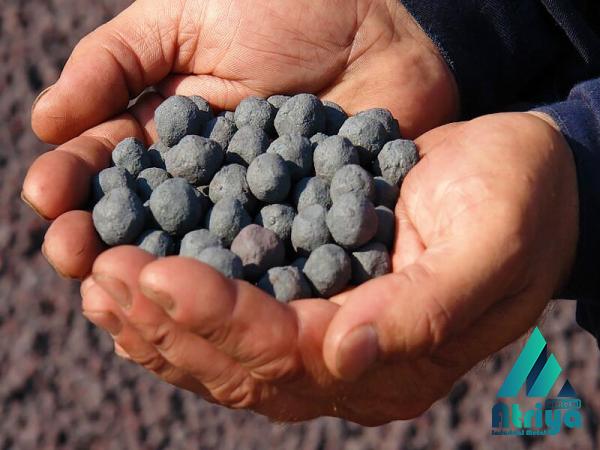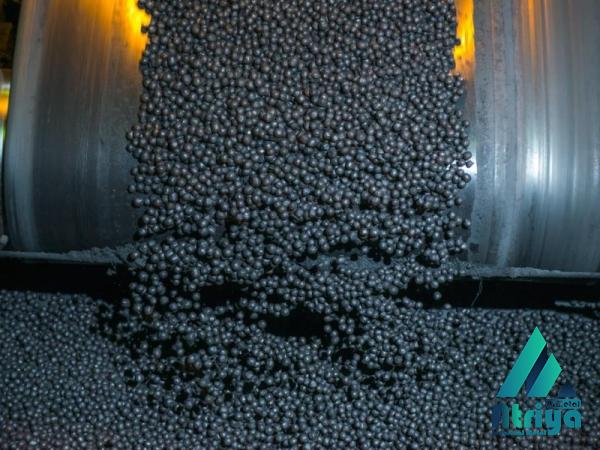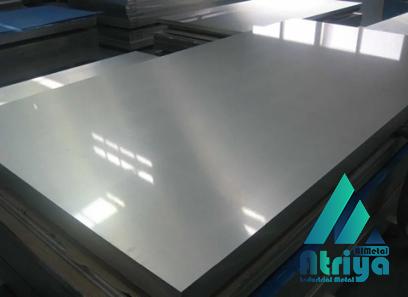Iron ore is a crucial raw material in the global steel industry, with various types and grades used for a range of applications. Understanding the different types of iron ore and their characteristics is essential for steelmakers and traders. This article provides a comprehensive overview of the most common types of iron ore, including their composition, properties, and uses. 1. Hematite: Hematite is one of the most abundant and widely distributed iron oxide minerals. It is characterized by its deep red color and fine-grained structure. Hematite is primarily composed of iron oxide (Fe2O3) and typically contains varying levels of impurities such as silica (SiO2), alu minum oxide (Al2O3), and trace amounts of other elements. Properties and Uses: – High iron content: Hematite typically contains 60% to 70% iron, making it the most important source of iron ore globally. – Steel production: Hematite is the primary ore used in the production of iron and steel due to its high iron content and relatively low impurity levels.
iron
 – Pigment industry: Hematite is also utilized as a pigment in paints, ceramics, and plastics due to its vibrant red color. – Jewelry: High-quality hematite is used in jewelry and gemstones, mainly for its metallic luster. 2. Magnetite: Magnetite, also known as lodestone, belongs to the spinel group of minerals and is a naturally occurring iron oxide. It is one of the most magnetic minerals and exhibits a black to gray metallic luster. Properties and Uses: – High iron content: Magnetite has the highest iron content among all iron ores, typically ranging from 65% to 72% iron. – Iron and steel production: Due to its significant iron content, magnetite is a valuable source of iron ore used in the production of iron and steel. – Industrial applications: Magnetite is used in various industrial processes, including coal washing, water purification, and cement manufacturing. – Magnetite nanoparticles: The unique properties of magnetite nanoparticles, such as their high magnetic susceptibility, make them valuable in biomedical applications, including drug delivery and diagnostic imaging.
– Pigment industry: Hematite is also utilized as a pigment in paints, ceramics, and plastics due to its vibrant red color. – Jewelry: High-quality hematite is used in jewelry and gemstones, mainly for its metallic luster. 2. Magnetite: Magnetite, also known as lodestone, belongs to the spinel group of minerals and is a naturally occurring iron oxide. It is one of the most magnetic minerals and exhibits a black to gray metallic luster. Properties and Uses: – High iron content: Magnetite has the highest iron content among all iron ores, typically ranging from 65% to 72% iron. – Iron and steel production: Due to its significant iron content, magnetite is a valuable source of iron ore used in the production of iron and steel. – Industrial applications: Magnetite is used in various industrial processes, including coal washing, water purification, and cement manufacturing. – Magnetite nanoparticles: The unique properties of magnetite nanoparticles, such as their high magnetic susceptibility, make them valuable in biomedical applications, including drug delivery and diagnostic imaging.
Specifications of iron
 3. Limonite: Limonite is a common iron ore that forms as a result of weathering and erosion of other iron-bearing minerals. It is often found in association with hematite, magnetite, and goethite. Limonite exhibits a yellow-brown color and has a high water content. Properties and Uses: – Varied composition: Limonite is not a pure mineral but rather a mixture of hydrated iron oxides, including goethite (FeOOH) and lepidocrocite (γ-FeOOH). – Lower iron content: Limonite typically contains around 50% iron, making it a lower-grade iron ore compared to hematite and magnetite. – Pigment industry: Limonite is used as a pigment in painting, staining wood, and making ceramics due to its yellow-brown color. – Industrial applications: It is also used in the production of iron nanoparticles, water treatment, and soil remediation. 4. Siderite: Siderite is an iron carbonate mineral that typically occurs in sedimentary environments and is associated with iron-rich formations. It is characterized by its yellow, brown, or gray color and often exhibits a pearly or vitreous luster. Properties and Uses: – Iron source and steel production: Siderite contains around 48% iron and is utilized as an iron ore source for steel production. – Industrial applications: It is utilized in the production of iron oxide pigments, as a soil conditioner, and for wastewater treatment due to its ability to remove heavy metals.
3. Limonite: Limonite is a common iron ore that forms as a result of weathering and erosion of other iron-bearing minerals. It is often found in association with hematite, magnetite, and goethite. Limonite exhibits a yellow-brown color and has a high water content. Properties and Uses: – Varied composition: Limonite is not a pure mineral but rather a mixture of hydrated iron oxides, including goethite (FeOOH) and lepidocrocite (γ-FeOOH). – Lower iron content: Limonite typically contains around 50% iron, making it a lower-grade iron ore compared to hematite and magnetite. – Pigment industry: Limonite is used as a pigment in painting, staining wood, and making ceramics due to its yellow-brown color. – Industrial applications: It is also used in the production of iron nanoparticles, water treatment, and soil remediation. 4. Siderite: Siderite is an iron carbonate mineral that typically occurs in sedimentary environments and is associated with iron-rich formations. It is characterized by its yellow, brown, or gray color and often exhibits a pearly or vitreous luster. Properties and Uses: – Iron source and steel production: Siderite contains around 48% iron and is utilized as an iron ore source for steel production. – Industrial applications: It is utilized in the production of iron oxide pigments, as a soil conditioner, and for wastewater treatment due to its ability to remove heavy metals.
buy iron
 5. Goethite: Goethite is an iron hydroxide mineral that often occurs as a weathering product of other iron-bearing minerals, such as hematite and magnetite. It is commonly found in soils and sedimentary rocks and is known for its yellow, brown, or red-brown color. Properties and Uses: – Iron content: Goethite typically contains around 63% iron and is considered a valuable iron ore. – Pigment industry: Goethite is used as a pigment, especially in paints, due to its earthy hues and excellent lightfastness. – Jewelry: High-quality goethite specimens are sometimes used in jewelry due to their unique colors and luster. Conclusion: Understanding the various types of iron ore is crucial for steelmakers and traders, as different ores have different compositions, properties, and uses. Hematite, magnetite, limonite, siderite, and goethite are some of the most common types of iron ore, each with its unique characteristics and applications. By harnessing the properties of these iron ores, the steel industry can continue to produce high-quality steel and meet the ever-growing demand for this vital material.
5. Goethite: Goethite is an iron hydroxide mineral that often occurs as a weathering product of other iron-bearing minerals, such as hematite and magnetite. It is commonly found in soils and sedimentary rocks and is known for its yellow, brown, or red-brown color. Properties and Uses: – Iron content: Goethite typically contains around 63% iron and is considered a valuable iron ore. – Pigment industry: Goethite is used as a pigment, especially in paints, due to its earthy hues and excellent lightfastness. – Jewelry: High-quality goethite specimens are sometimes used in jewelry due to their unique colors and luster. Conclusion: Understanding the various types of iron ore is crucial for steelmakers and traders, as different ores have different compositions, properties, and uses. Hematite, magnetite, limonite, siderite, and goethite are some of the most common types of iron ore, each with its unique characteristics and applications. By harnessing the properties of these iron ores, the steel industry can continue to produce high-quality steel and meet the ever-growing demand for this vital material.











Your comment submitted.